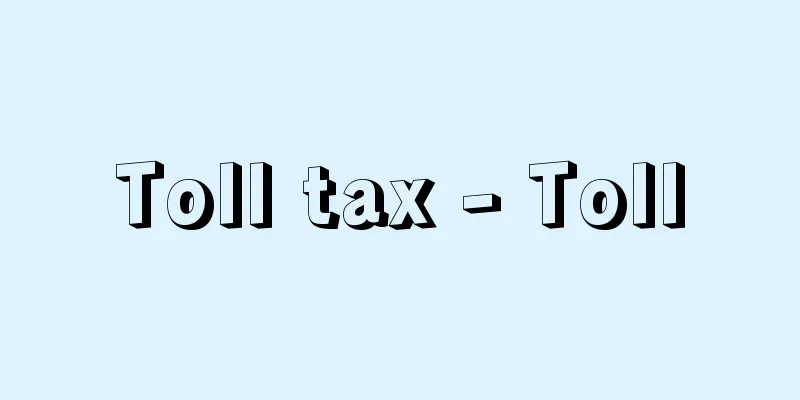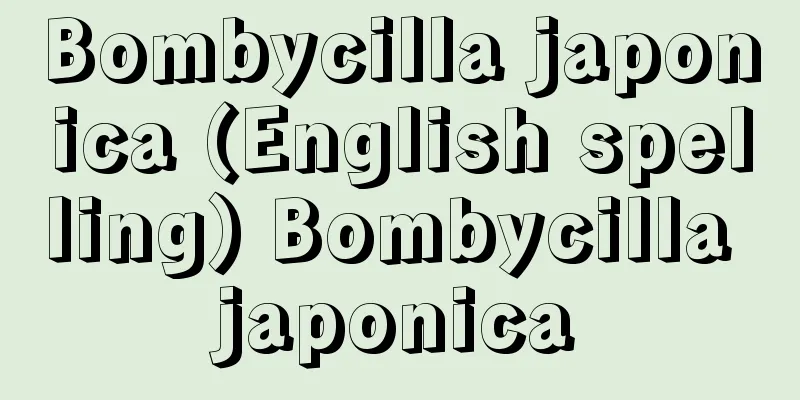Toll tax - Toll

|
A national tax levied on passengers of trains, electric trains, buses, steamships and airplanes based on the Toll Tax Law (Law No. 43 of 1940). It was abolished in April 1989 (Heisei 1). The toll was levied at a rate of 10% of the passenger fare, which is the tax base, special express fare, express fare, semi-express fare and sleeper fare. However, second-class passengers of trains, electric trains and buses, and first- and second-class passengers of steamships were not taxed. Since there is no distinction between classes of trains of the Japanese National Railways (now JR), they are considered second class under the tax law, and were only taxed on A-class sleeper fare and green car fare. The toll was to be collected by those who operate the transportation business using trains, etc. when collecting taxable fares. The predecessor of the toll tax was established by a revision of the emergency special tax in January 1905 (Meiji 38) during the Russo-Japanese War. The emergency special tax was abolished in 1910 and an independent toll tax law was enacted, but it was heavily criticized for taxing even third-class passengers traveling short distances, so it was abolished during the tax reform in March 1926 (Taisho 15). However, the toll tax was reinstated in 1938 (Showa 13) as a source of military expenditure for the Sino-Japanese War, and another independent toll tax law was enacted in 1940. After that, it underwent several revisions and remained in place until it was abolished in 1989. [Masatoshi Hayashi] [Reference item] |Source: Shogakukan Encyclopedia Nipponica About Encyclopedia Nipponica Information | Legend |
|
汽車、電車、乗合自動車、汽船および航空機の乗客に対して通行税法(昭和15年法律43号)に基づいて課された国税。1989年(平成1)4月に消費税が導入されたことにより廃止された。通行税は、課税標準である旅客運賃、特別急行料金、急行料金、準急行料金、寝台料金に対して100分の10の税率で課税された。ただし、汽車、電車、乗合自動車の二等ならびに汽船の一等・二等の乗客は課税されなかった。国鉄(現JR)の汽車には等級の区別がないから税法上は二等とみなされ、Aクラスの寝台料金およびグリーン料金に対してのみ課税された。通行税は、汽車等により運輸業を営む者が、課税対象料金を領収の際に徴収することになっていた。 通行税の前身は、日露戦争当時の1905年(明治38)1月の非常特別税の改正によって創設されたものである。1910年には非常特別税が廃止され、独立の通行税法が制定されたが、近距離の三等乗客にまで課税したため非難が強かったので、1926年(大正15)3月の税制改正の際にこれを廃止した。しかし、日中戦争の軍事費の財源として1938年(昭和13)には通行税が復活され、さらに40年には独立の通行税法が制定された。その後、数次の改正を経て、89年の廃止まで続いた。 [林 正寿] [参照項目] |出典 小学館 日本大百科全書(ニッポニカ)日本大百科全書(ニッポニカ)について 情報 | 凡例 |
<<: Notice disposition - Tsuukokushobun
>>: List of Traffic - Tsuukou Iran
Recommend
Scandal (English spelling)
Originally, it meant a court case where it was di...
Leather making - Kawazukuri
The act of preparing fish sashimi with the skin st...
Kusado Sengen
The remains of a medieval city are located on an i...
Bistriţa (English spelling)
A city in northern Romania. Located on the Bistric...
Sorge, Richard
Born: April 10, 1895 in Baku [Died] November 7, 19...
Kanagi
...A ceremony in which criminals who commit theft...
Sachertorte
...In Austria, Wiener Schnitzel, a cutlet made of...
Woody Woodpecker
...Meanwhile, Disney went on to use the world'...
Iketei-ki
Also called "Chitei no Ki." This is a C...
Kemari - Kemari
〘 noun 〙① A ball played by kicking. Made from tann...
Know Your Money
…Counterfeiting has been rampant in the United St...
Narcissus - Narkissos (English spelling)
A beautiful young man from Greek mythology. His E...
Varga - Varga (English transcription) Евгений Самойлович Варга/Evgeniy Samoylovich Varga
Hungarian economist who worked in the Soviet Unio...
La Tour, MQde (English spelling) LaTourMQde
...In the crypt, you can see Carolingian pavement...
Walter Bagehot
British economist, political scientist, and journ...









